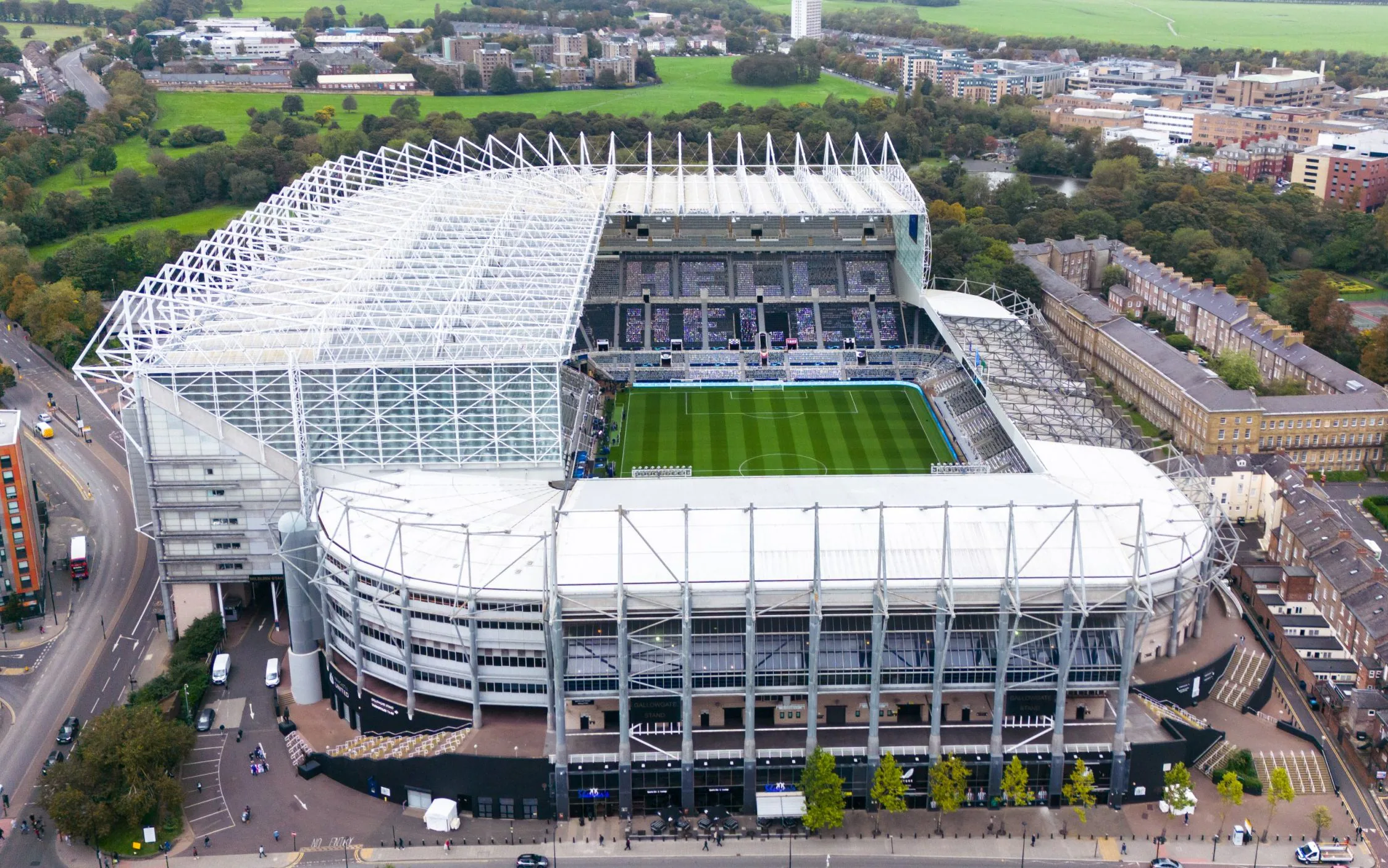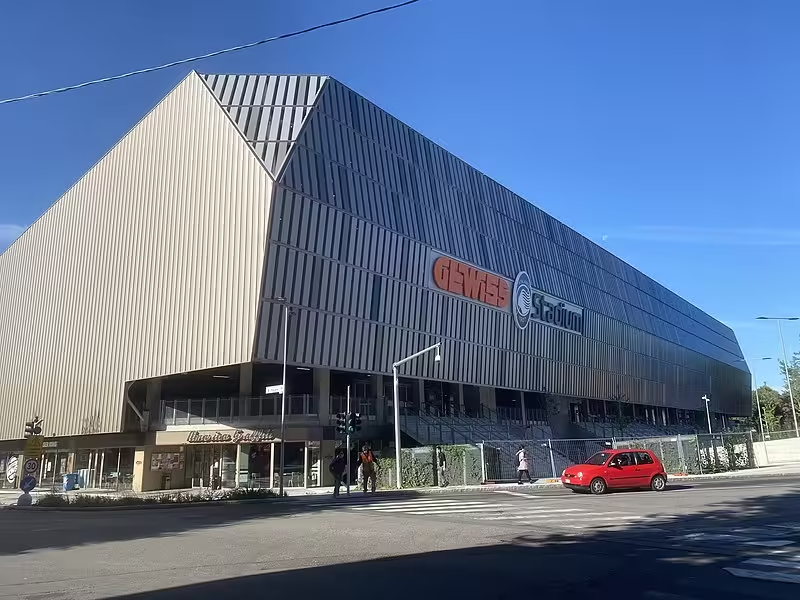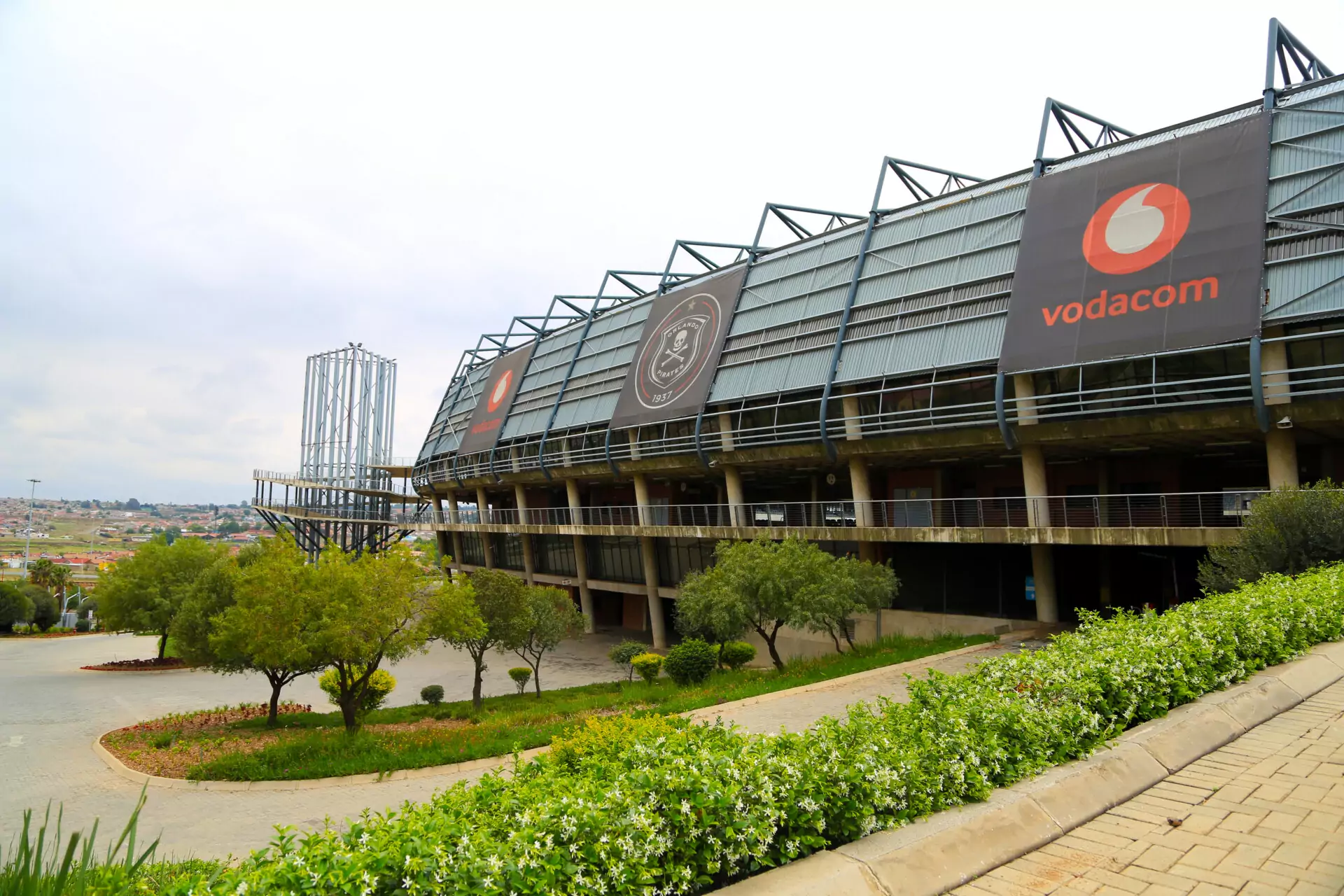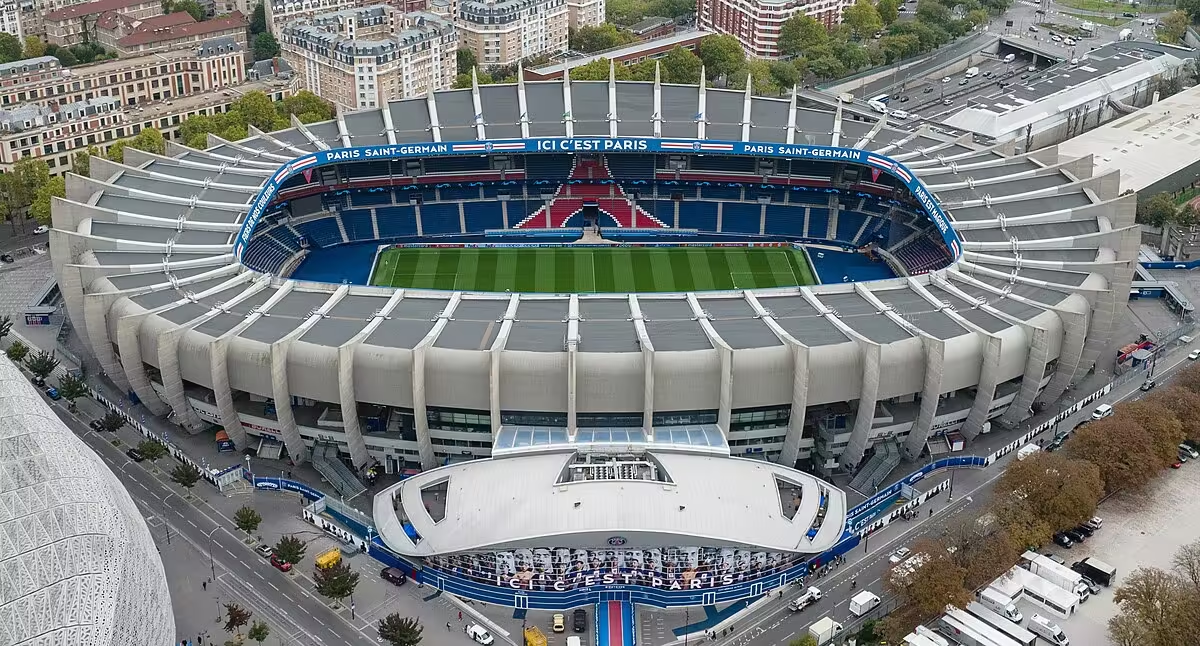St James’ Park stadium, located in Newcastle upon Tyne, England, is a world-renowned sports arena that has been the home ground of Newcastle United F.C. since 1892. With a seating capacity of 52,350 seats, it is the eighth largest football stadium in England. The stadium has undergone several renovations over the years, including the addition of new seating areas and modernization of facilities, making it one of the most modern and well-equipped stadiums in the world.
The stadium’s rich history, unique design, and state-of-the-art facilities make it a popular destination for sports fans and tourists alike. The stadium’s silhouette is one of the most recognizable in the world of football, and its iconic location in the heart of Newcastle makes it a must-visit for anyone interested in the sport. The stadium is also home to a number of community and cultural events throughout the year, making it a hub of activity and excitement for locals and visitors alike.
Key Takeaways
- St James’ Park stadium is the home ground of Newcastle United F.C. and has a seating capacity of 52,350 seats, making it the eighth largest football stadium in England.
- The stadium has undergone several renovations over the years, making it one of the most modern and well-equipped stadiums in the world.
- St James’ Park stadium is a popular destination for sports fans and tourists alike, and is also home to a number of community and cultural events throughout the year.
St James’ Park Stadium History
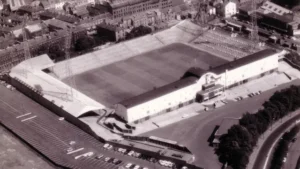
St James’ Park is a football stadium located in Newcastle upon Tyne, England. The stadium has a seating capacity of 52,350 seats, making it the 8th largest football stadium in England [1]. The stadium has been the home ground of Newcastle United F.C since 1892, and has been used for football since 1880 [1]. Throughout its history, the desire for expansion has caused conflict with local residents and businesses.
Construction and Opening
St James’ Park was originally constructed in 1880, and was known as the Newcastle East End Ground [1]. The stadium was renamed St James’ Park in 1892, after the nearby St James’ Church [1]. The stadium was officially opened on 10 September 1892, with a match between Newcastle United and Liverpool [1]. The stadium had a capacity of 30,000 at the time of its opening [1].
Renovations and Expansions
Over the years, St James’ Park has undergone several renovations and expansions. In 1905, the stadium was expanded to a capacity of 60,000, making it the largest stadium in England at the time [1]. The stadium was extensively renovated in the 1990s, with the Leazes End and Gallowgate End stands being replaced with new all-seater stands [2]. The redevelopment took the stadium’s seating capacity north of 52,000 and gave St. James’ Park the famous silhouette we know today [2]. Since then, modernisation has continued around the ground, helping to maintain St. James’ Park’s reputation as one of the greatest arenas in world football [2].
Historical Events
St James’ Park has hosted several historical events, including matches during the 1966 FIFA World Cup and the 1996 UEFA European Football Championship [3]. The stadium has also hosted several high-profile concerts, including performances by The Rolling Stones, Queen, and U2 [1].
[1] Wikipedia [2] Newcastle United [3] Stadium Database
Stadium Features
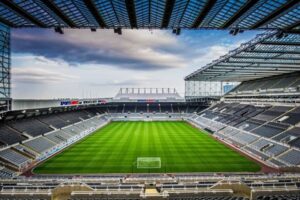
Seating Capacity
St James’ Park is the home ground of Newcastle United F.C, with a seating capacity of 52,350 seats, making it the 8th largest football stadium in England. The stadium has undergone multiple developments since its opening in 1892, with the last major expansion completed in 2000.
Pitch and Surface
The pitch at St James’ Park has been praised for its quality and consistency. It is a natural grass surface, which is regularly maintained to ensure optimal playing conditions. The pitch dimensions are 101m x 68m, which is the standard size for Premier League football grounds.
Facilities
St James’ Park has a range of facilities to accommodate fans and players alike. There are several food and drink outlets throughout the stadium, offering a variety of refreshments. The stadium also has several hospitality suites, which can be hired for private events or corporate functions. Additionally, there are numerous merchandise outlets where fans can purchase official Newcastle United merchandise.
Overall, St James’ Park is a modern, well-equipped stadium that provides an excellent experience for both fans and players. Its central location in Newcastle upon Tyne makes it easily accessible, and the stadium’s facilities ensure that visitors can enjoy a comfortable and enjoyable match day experience.
Home Teams
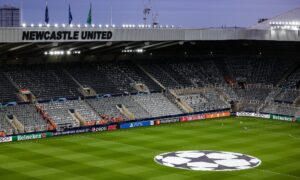
St James’ Park is the home ground of Newcastle United FC, one of the most popular football clubs in England. The stadium has been their home ground since 1892, and it has a seating capacity of 52,350 seats, making it the eighth largest football stadium in England [1].
Newcastle United FC has a long and storied history, having won four English League titles, six FA Cups, and one UEFA Intertoto Cup. The team has also produced many great players over the years, including Alan Shearer, Peter Beardsley, and Kevin Keegan. The club has a passionate fan base, and St James’ Park is known for its electric atmosphere on matchdays.
Other Tenants
While Newcastle United FC is the primary tenant of St James’ Park, the stadium has also hosted other events over the years. In the past, it has been used for rugby union matches, boxing matches, and concerts. The stadium has also hosted international football matches, including matches for the England national team.
In addition, St James’ Park has hosted several high-profile events, such as the Olympic football tournament during the 2012 Summer Olympics. The stadium has also been used as a venue for the Rugby World Cup and the Commonwealth Games.
Overall, St James’ Park is a versatile stadium that has hosted a wide range of events over the years. While Newcastle United FC is the primary tenant, the stadium has also played host to many other events that have helped to make it a beloved venue for fans and visitors alike.
References
Location and Access
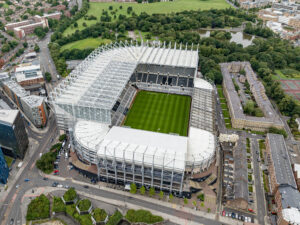
Geographical Setting
St James’ Park is a football stadium located in Newcastle upon Tyne, England. The stadium is situated in the heart of the city center, on the corner of Gallowgate, St. James’ Boulevard, and Barrack Road. The stadium’s coordinates are 54.9756° N, 1.6217° W. The stadium is surrounded by several landmarks, including the Eldon Square shopping center, the Newcastle University campus, and the Royal Victoria Infirmary hospital.
Transport Links
St James’ Park is one of the most accessible and well-connected football grounds in the UK. The stadium is located close to several major roads, including the A167(M), which runs through the city center. From the North, the A1 and A696 provide easy access to the stadium, while the A69 links the stadium to the West.
The stadium is also well-served by public transport links. The nearest Metro station is St James’, which is located directly opposite the stadium. The station is served by trains on the Yellow line, which runs from South Shields to Newcastle Airport. The stadium is also within walking distance of Newcastle Central Station, which is served by trains from across the UK.
For those traveling by car, there are several car parks located near the stadium, including the Grainger Town multi-storey car park, which is located on Waterloo Street. There are also several taxi ranks located near the stadium, including one situated two minutes away on foot, opposite the entrance to Chinatown.
Economic Impact
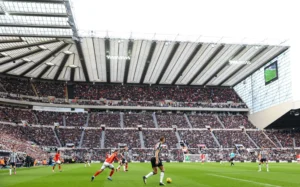
St James’ Park is not only a beloved stadium for Newcastle United fans but also an economic powerhouse for the city of Newcastle. The stadium generates a significant amount of revenue for the local economy, providing employment opportunities and supporting local businesses.
Employment
The stadium employs a significant number of people on match days, ranging from security personnel to food vendors and ticket takers. According to a report by The Stadium Business, the expansion of St James’ Park could create up to 500 new jobs in the local area. This would be a significant boost to the local economy, providing much-needed employment opportunities for the people of Newcastle.
Local Business Support
The economic impact of St James’ Park extends beyond the stadium itself. The influx of fans on match days provides a significant boost to local businesses such as restaurants, bars, and shops. According to a study by the Federal Reserve Bank of St. Louis, sports stadiums can have a positive impact on local businesses, with increased foot traffic resulting in higher sales.
In conclusion, the economic impact of St James’ Park is significant, providing employment opportunities and supporting local businesses. The expansion of the stadium could further boost the local economy, creating new jobs and opportunities for the people of Newcastle.
Community and Cultural Events
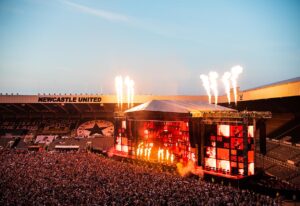
St James Park is not only a football stadium but also a cultural hub in Newcastle. The stadium hosts a variety of community and cultural events throughout the year, bringing people together from different backgrounds.
Concerts
St James Park has played host to many high-profile concerts over the years, with some of the biggest names in music taking to the stage at the stadium. The stadium has a capacity of over 50,000 people, making it an ideal venue for large-scale concerts.
Community Outreach
St James Park also hosts a range of community outreach events, aimed at bringing the local community together. These events include charity fundraisers, community fun days, and educational events for young people.
The stadium’s commitment to community outreach has been recognized with several awards, including the Football League Community Club of the Year award in 2012. The stadium’s outreach programs are run by the Newcastle United Foundation, a charity that uses football to engage with young people and promote social inclusion.
St James Park’s community and cultural events are an important part of the stadium’s identity, bringing people together and promoting social cohesion in the local community.
Sustainability Initiatives
St James Park stadium has implemented various sustainability initiatives to reduce waste and promote environmental friendliness. One of the most notable initiatives is the zero waste program, which aims to reduce waste generated during events to zero. This program has been successful in reducing waste and diverting it away from landfills. In fact, St James Park stadium was the first venue of its size to be certified as a zero waste facility by Green Business Certification Inc. [1]
The stadium has also implemented recycling programs to reduce waste. Recycling bins are placed throughout the stadium, and fans are encouraged to recycle their waste. The stadium has also implemented composting programs to divert food waste from landfills. These initiatives have been successful in reducing the amount of waste generated during events.
In addition to waste reduction initiatives, St James Park stadium has implemented energy efficiency programs to reduce its carbon footprint. The stadium has installed LED lighting throughout the facility, which has reduced energy consumption. The stadium has also installed solar panels on the roof, which generate renewable energy. These initiatives have been successful in reducing the stadium’s energy consumption and carbon emissions.
Overall, St James Park stadium has implemented several sustainability initiatives to reduce waste and promote environmental friendliness. These initiatives have been successful in reducing waste and energy consumption, and promoting sustainability.
[1] The New York Times. (2023, September 20). At Sports Stadiums, Reducing Waste Is a Team Effort. https://www.nytimes.com/2023/09/20/sports/stadiums-sustainability-climate-change.html
Other Stadiums Articles:
Check Out: The Amex Stadium: A Comprehensive Guide
Check Out: St Mary’s Stadium: Home of Southampton FC
Check Out: Cape Town Stadium: A Modern Icon in South Africa
Check Out: Dobsonville Stadium: A Comprehensive Guide to the Home of Soweto’s Football Giants
Check Out: Pietersburg Stadium: A Comprehensive Guide to the Venue
